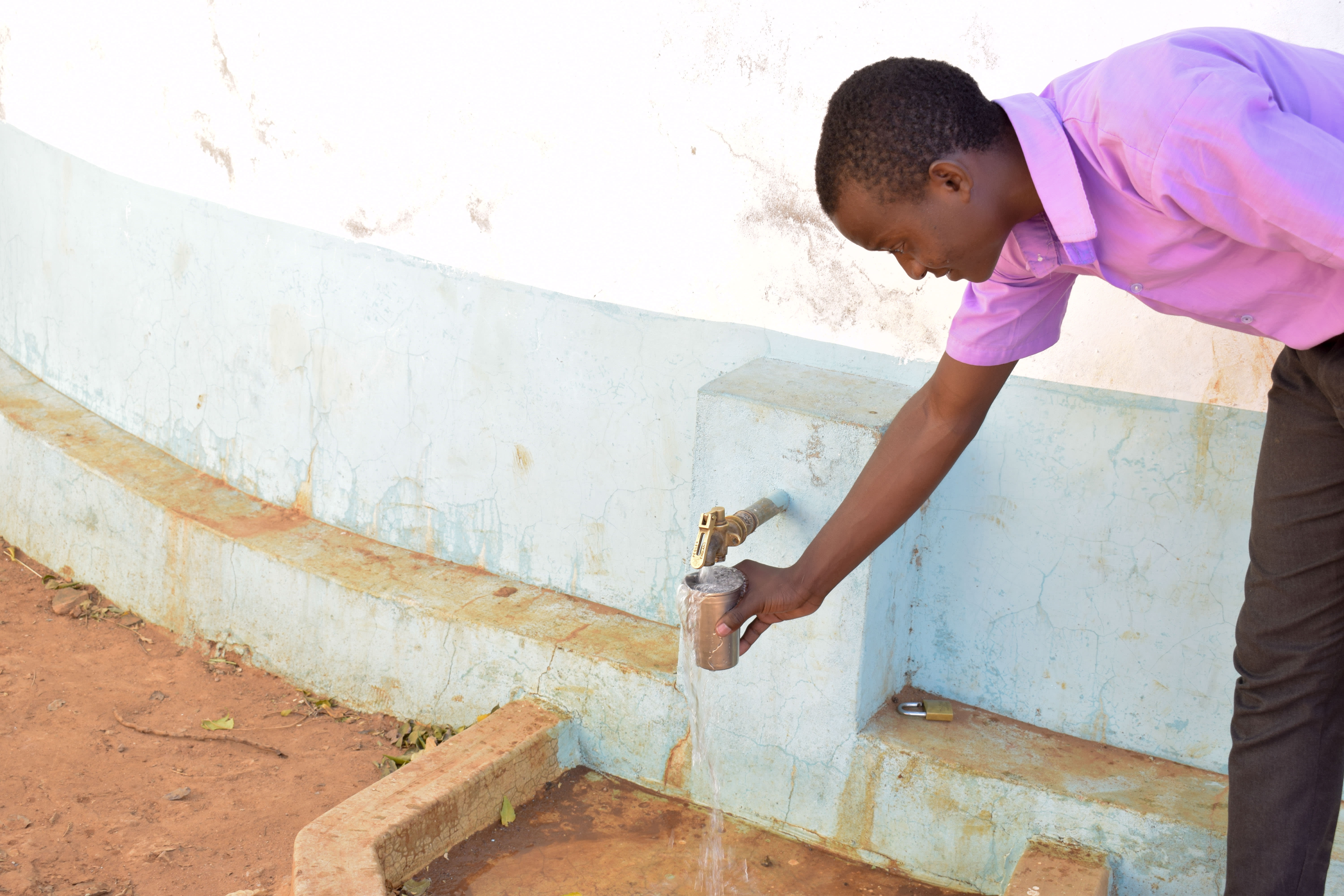This project is a part of our shared program with Africa Sand Dam Foundation. Our team is pleased to directly share the below report (edited for clarity, as needed).
Welcome to the School
Matheani Secondary School was started in 2006 to serve the children of Matheani Village, Makueni County, Kenya. It is a boarding school for dozens of students. The school employs nine teachers and six support staff.
The school has enjoyed a close relationship with Wumiisyo wa Muangeni Self-Help Group, which has been working with ASDF since 2015. Members of Wumiisyo wa Muangeni are parents of students at Matheani, and are well aware of the issues they face every day. It is for this reason that they proposed the construction of a water tank to help alleviate the suffering that their children go through.
Water Situation
The school only has two plastic tanks guttered to tap rainwater. One is 10,000 liters and the other is 5,000 liters.
Water is bought from vendors who go to River Athi, eight kilometers away. Using donkeys, these vendors are able to transport four 20-liter jerrycans which they sell at 150 shillings per drum. When delivered to the school, it is dumped in the plastic tanks.
Students themselves are sometimes sent to the river to fetch water for use at school. The available tanks are guttered to tap rainwater from the roofs. Even when both tanks are full of rainwater, they only last the school one week. The school needs more than 1,400 liters a day for cooking, drinking, washing clothes, bathing, watering the agriculture projects, and washing latrines and classes. Because Matheani has so many student boarders, the water shortage is severe.
18-year-old Joshua Munywoki is a form three student and boys' dorm captain. "Sometimes we have been required to go down to River Athi to fetch water for our use in school. This complicates our academic life as the time taken to the river and the associated tiredness often contributed to poor grades in class," he said.
Sanitation Situation
There are seven pit latrines between boys, girls, and staff. The teachers' latrines are the only ones in good condition. There are bathing shelters available for the boarding students, and there is one hand-washing station. There is a designated area for throwing garbage, but a pit needs to be dug to prevent the trash from blowing around and littering the school grounds again.
18-year-old Nancy Mwangangi is also a boarding student at Matheani. "Boarding students are provided with one bucket of water per day. This is way too much below the personal requirements for bathing and washing, especially for us girls. This has created cases of water thefts among students, and low levels of cleanliness," she shared.
Plans: Hygiene and Sanitation Training
Students and staff will be trained for one day. Those in attendance will form a school health club that will promote good hygiene and sanitation practices both at school and home. They will learn all of the steps to proper hand-washing, how to treat water, and how to keep their environment clean. The school will also be taught how to best oversee and maintain their new rainwater catchment tank and hand-washing stations.
Plans: Hand-Washing Stations
Three hand-washing stations will be delivered at the project’s completion. These are 1,000-liter plastic tanks fitted with four taps. The health club and school management will be responsible for making sure tanks are filled with water and that a cleaning agent such as soap or ash is available.
Plans: Rainwater Catchment Tank
We will build a 104,000-liter rainwater catchment tank for this school. This water will benefit the students, teachers, and supplementary staff. Parents will mobilize the materials needed for construction, such as sand and stone. They will also lend some strong arms to help with the actual construction.
The huge capacity of this tank makes the others look tiny in comparison; 104,000 liters should be enough water to carry students through the entire dry season. As soon as the tank has time to cure, it can begin to collect rainwater for drinking, cooking and cleaning!

 Rainwater Catchment
Rainwater Catchment
 Rehabilitation Project
Rehabilitation Project

































